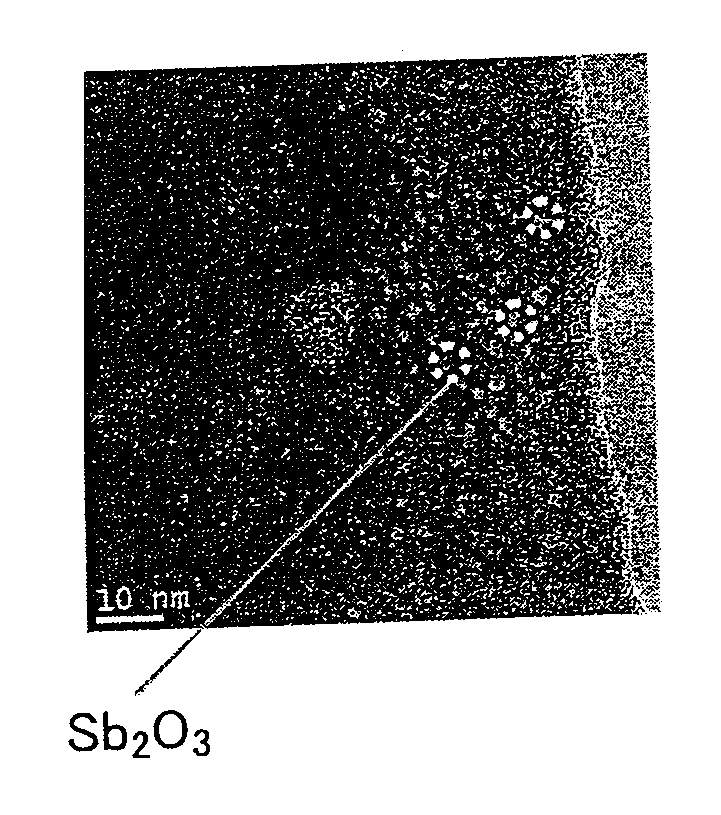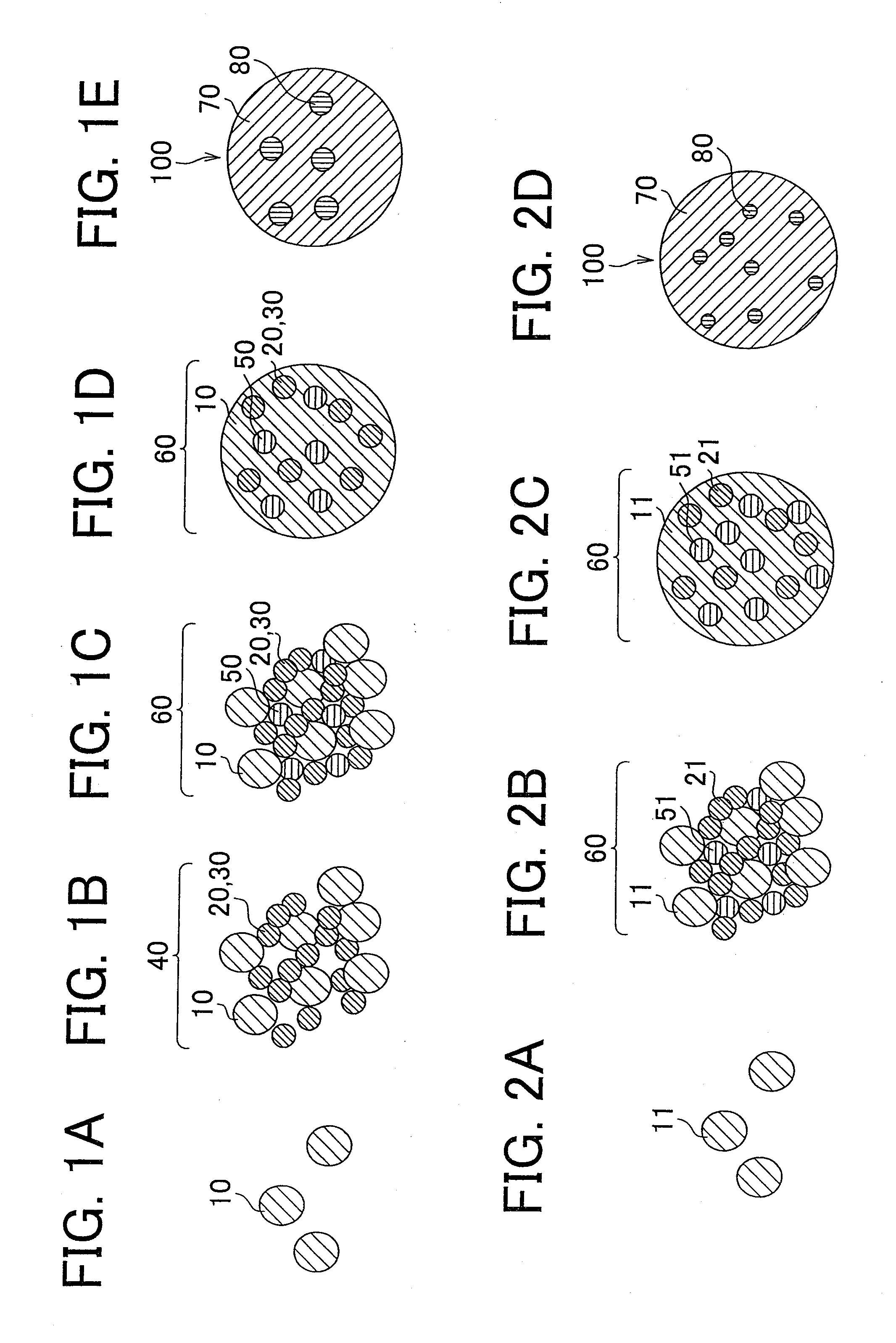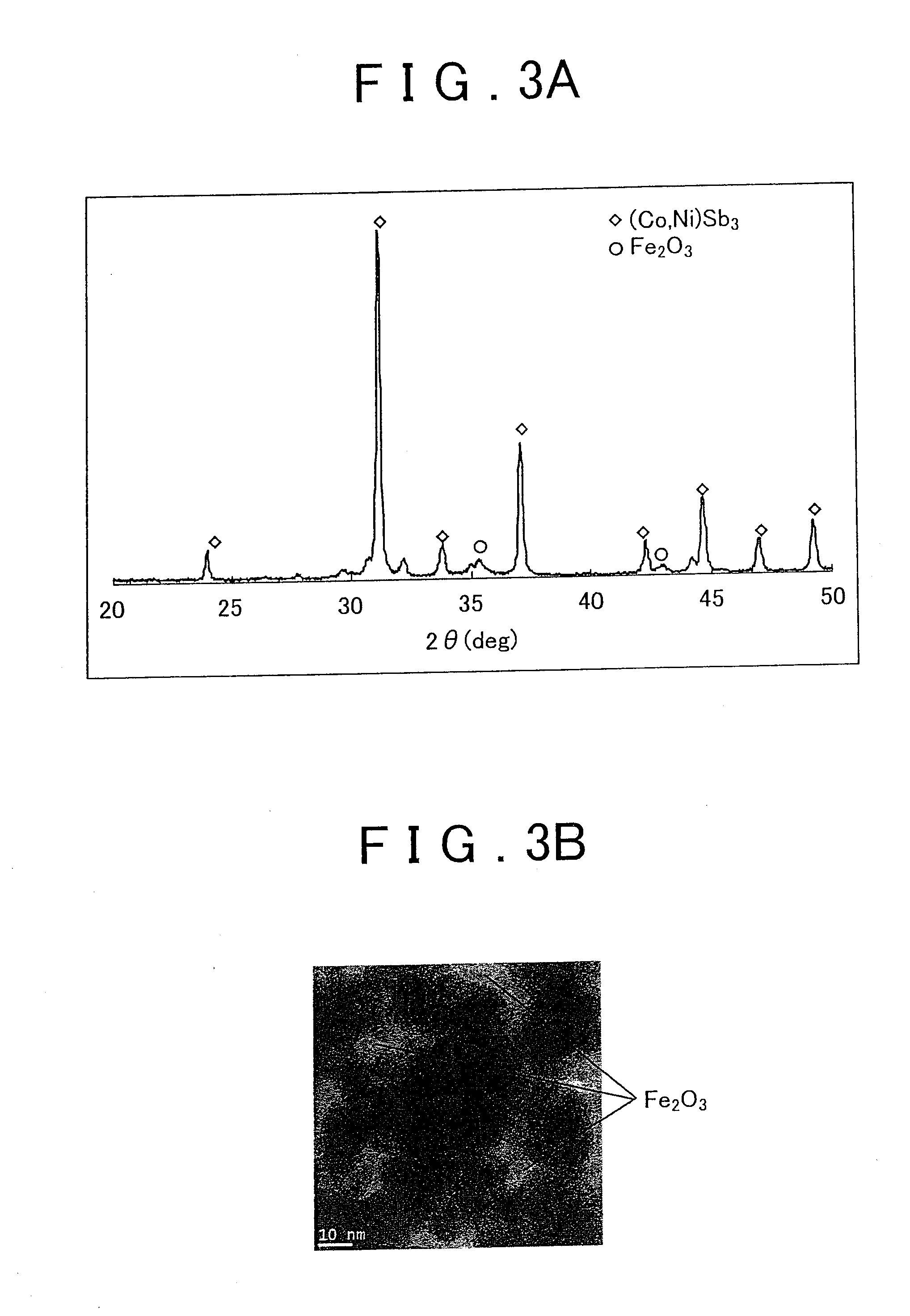Nanocomposite thermoelectric conversion material and method of producing the same
a thermoelectric conversion material and nanocomposite technology, applied in the manufacture/treatment of thermoelectric devices, non-metal conductors, conductors, etc., can solve the problems of inability to prevent the precipitation of phonon-scattering particles, the amount of salt of metal or alloy in the solution is excessive with respect, and the smallest dispersed ceramic particles are sub-micron particles. , to achieve the effect of reducing thermal conductivity and high phonon-scattering
- Summary
- Abstract
- Description
- Claims
- Application Information
AI Technical Summary
Benefits of technology
Problems solved by technology
Method used
Image
Examples
first embodiment
[0027]FIGS. 1A to 1E schematically show processes according to a first embodiment of the invention. The description will be made on the assumption that a nanocomposite thermoelectric conversion material, in which particles made of Fe2O3 are dispersed in a matrix made of a thermoelectric conversion material (Co, Ni) Sb3, is produced. The particles made of Fe2O3 serve as particles used for scattering phonons (hereinafter, referred to as “phonon-scattering particles”).
First Step
[0028]A solution, which contains salts of a plurality of first elements Co, Ni, and Sb that constitute the thermoelectric conversion material (Co, Ni) Sb3, and a salt of a second element Fe that has a redox potential lower than redox potentials of the first elements, is prepared.
[0029]The redox potentials of the elements in decreasing order are as follows. The redox potential of Sb is 0.16V. The redox potential of Ni is −0.25 V. The redox potential of Co is −0.27V. The redox potential of Fe is −0.44V.
Second Step...
second embodiment
[0038]FIGS. 2A to 2D schematically show processes according to a second embodiment of the invention. The description will be made on the assumption that a nanocomposite thermoelectric conversion material, in which particles made of Sb2O3 are dispersed in a matrix made of a thermoelectric conversion material (Bi, Sb)2Te3, is produced. The particles made of Sb2O3 serve as phonon-scattering particles.
First Step
[0039]A solution, which contains salts of a plurality of first elements Bi, Sb, and Te that constitute the thermoelectric conversion material (Bi, Sb)2Te3, is prepared. The solution contains an excessive amount of the salt of a predetermined element (Sb) among the plurality of the first elements, with respect to a predetermined composition of the thermoelectric conversion material, and the redox potential of the predetermined element (Sb) is not the highest among the redox potentials of the first elements (Te has the highest redox potential).
[0040]In this case, the redox potentia...
first example
[0047]The nanocomposite thermoelectric conversion material, in which 10 vol % of Fe2O3 particles were dispersed in the matrix made of the thermoelectric conversion material (Co, Ni) Sb3, was produced according to a procedure described below on a condition described below, using the method according to the first embodiment of the invention. The Fe2O3 particles served as phonon-scattering particles.
Preparation of a Source Material Solution
[0048]A source material solution was prepared by dissolving source materials described below, in 100 ml of ethanol.
[0049]The source materials for the matrix were 2.75 g of antimony chloride (SbCl3), 0.9 g of cobalt chloride hexahydrate (CoCl2·6H2O), and 0.057 g of nickel chloride hexahydrate (NiCl2·6H2O). The source material for the dispersed particles was 0.335 g of ferric chloride hexahydrate (FeCl3·6H2O).
Reduction
[0050]A solution, which was produced by dissolving 2.4 g of NaBH4, which served as a reducing agent, in 100 ml of ethanol, was dropped i...
PUM
| Property | Measurement | Unit |
|---|---|---|
| thermal conductivity | aaaaa | aaaaa |
| particle diameter | aaaaa | aaaaa |
| particle diameter | aaaaa | aaaaa |
Abstract
Description
Claims
Application Information
 Login to View More
Login to View More - R&D
- Intellectual Property
- Life Sciences
- Materials
- Tech Scout
- Unparalleled Data Quality
- Higher Quality Content
- 60% Fewer Hallucinations
Browse by: Latest US Patents, China's latest patents, Technical Efficacy Thesaurus, Application Domain, Technology Topic, Popular Technical Reports.
© 2025 PatSnap. All rights reserved.Legal|Privacy policy|Modern Slavery Act Transparency Statement|Sitemap|About US| Contact US: help@patsnap.com



